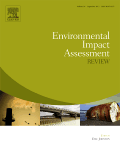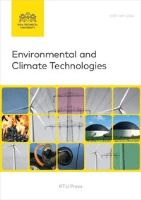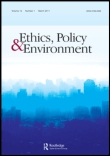
Environmental Impact Assessment Review
Scope & Guideline
Pioneering insights for sustainable decision-making.
Introduction
Aims and Scopes
- Environmental Impact Assessment (EIA) Methodologies:
The journal publishes studies that develop, refine, and evaluate methodologies for conducting environmental impact assessments, ensuring rigorous and systematic approaches to assess potential environmental consequences. - Sustainable Development and Policy Formulation:
Research often revolves around how environmental assessments can inform and shape sustainable development policies, including the integration of sustainability considerations into planning and regulatory frameworks. - Climate Change and Environmental Resilience:
A significant focus is on climate change impacts and adaptation strategies, examining how various sectors can enhance resilience and reduce vulnerability through effective environmental assessment. - Ecosystem Services and Biodiversity:
Studies related to assessing and valuing ecosystem services and biodiversity impacts are prevalent, reflecting the journal's commitment to understanding ecological health alongside human development. - Stakeholder Engagement and Social Dimensions:
The journal emphasizes the importance of stakeholder participation in the EIA process, exploring how social dynamics influence environmental decision-making and project outcomes. - Technological Innovations in Environmental Assessment:
Research on how emerging technologies, such as AI and big data, can enhance the efficiency and effectiveness of environmental assessments is increasingly featured, reflecting a trend towards integrating advanced analytical tools.
Trending and Emerging
- Integration of Social Equity in Environmental Assessments:
There is a rising trend in studies addressing social equity and justice within the EIA process, focusing on how environmental decisions impact different communities and the importance of including marginalized voices. - Climate Change Mitigation and Adaptation Strategies:
Research increasingly emphasizes the role of EIAs in addressing climate change, exploring mitigation pathways and adaptation measures that can be integrated into planning processes. - Cumulative Impact Assessment:
An emerging focus on cumulative impacts reflects a recognition that individual projects can have significant collective effects on the environment, prompting calls for assessments that consider these broader implications. - Use of Digital Tools and Data Analytics:
The integration of digital tools, such as geographic information systems (GIS) and machine learning, is becoming more prevalent, enhancing the capacity for data-driven decision-making in environmental assessments. - Transboundary Environmental Issues:
A growing body of research addresses transboundary environmental impacts, particularly in contexts involving shared resources or ecosystems, emphasizing the need for collaborative assessment frameworks.
Declining or Waning
- Traditional EIA Frameworks:
Research centered on conventional EIA procedures has become less prominent, as the field moves towards more integrative and adaptive approaches that consider broader environmental and social factors. - Sector-Specific Studies:
There has been a noticeable decline in papers focusing solely on sector-specific impacts (e.g., agriculture, mining) without integrating cross-sectoral analysis or considering cumulative impacts. - Descriptive Case Studies:
The journal has shifted away from purely descriptive case studies towards more analytical and quantitative research, indicating a move towards evidence-based assessments and modeling.
Similar Journals

Environmental and Climate Technologies
Innovating Research for Climate Resilience.Environmental and Climate Technologies is a premier open-access journal dedicated to advancing knowledge in the fields of environmental science and renewable energy. Published by SCIENDO since 2009, this journal plays a crucial role in disseminating innovative research and interdisciplinary studies that address the pressing challenges posed by climate change and sustainable development. With its current positioning in the Q2 quartile for Environmental Science (miscellaneous) and Q3 for Renewable Energy, Sustainability and the Environment, it is recognized for its significant contributions to the academic community, ranking #107 out of 233 in General Environmental Science and #161 out of 270 in Renewable Energy. Hailing from Germany and operating under an open-access policy, Environmental and Climate Technologies ensures that research remains accessible to a global audience, fostering collaboration and discussion among researchers, professionals, and students alike. The journal invites rigorous scientific inquiries and practical solutions that can mitigate the impact of climate-related issues, making it a vital resource for those committed to environmental stewardship and sustainability.

Regional Sustainability
Transforming urban landscapes with sustainable practices.Regional Sustainability is a premier open access journal published by KEAI PUBLISHING LTD, devoted to the interdisciplinary exploration of sustainable practices within urban and regional contexts. Since its inception in 2020, this journal has quickly established itself as a leading platform for innovative research, currently holding a strong position in category quartiles, including Q1 rankings in Development and Geography, Planning and Development in 2023. With its broad scope encompassing essential themes in Renewable Energy and Urban Studies, Regional Sustainability provides valuable insights and advances knowledge critical for sustainable development, drawing contributions from scholars and practitioners worldwide. The journal’s impressive Scopus rankings underscore its significance with a percentile rank of 87th in both Urban Studies and Development, making it essential reading for researchers and policymakers alike. The journal is headquartered in Beijing, China, and is committed to disseminating high-quality research that addresses contemporary challenges in sustainability.

Global Sustainability
Fostering Insight for Environmental ProgressGlobal Sustainability, published by Cambridge University Press, serves as a pivotal platform for interdisciplinary research in the realms of sustainability, management, and environmental policy. Since its establishment as an Open Access journal in 2018, it has empowered researchers, professionals, and students by ensuring that high-quality research is widely accessible. With an impressive impact factor reflected in its Q1 category rankings in both Global and Planetary Change and Management, Monitoring, Policy and Law, this journal is at the forefront of advancing knowledge and strategies crucial for sustainable development. Operating from its headquarters in Cambridge, United Kingdom, this journal not only influences academic discourse but also plays a significant role in shaping public policy and practices towards a more sustainable world. Researchers are encouraged to submit innovative contributions as the journal continues to converge impactful scholarship from 2018 to 2024 and beyond.

Geography and Sustainability
Exploring Interdisciplinary Solutions for Environmental Challenges.Geography and Sustainability is a prestigious, peer-reviewed journal published by Elsevier, focusing on the interdisciplinary fields of geography, ecology, and environmental science. As an Open Access publication since 2020, it aims to provide a platform for the dissemination of high-quality research that addresses critical sustainability challenges facing our planet. Based in China, the journal navigates through an impressive array of categories, all classified in the Q1 Quartile rankings for 2023, showcasing its top-tier status in areas such as Earth-Surface Processes, Geography, Planning and Development, and Nature and Landscape Conservation. With its notable impact factors—ranked 2nd in Earth and Planetary Sciences and 3rd in Environmental Science—it attracts contributions from leading experts and emerging scholars alike. Researchers, professionals, and students seeking to advance the scientific understanding of sustainability and its geographical implications will find indispensable resources and innovative findings within the pages of this journal.

One Ecosystem
Exploring the intricate web of life within our ecosystems.One Ecosystem is a leading academic journal published by PENSOFT PUBLISHERS, dedicated to advancing the understanding of ecosystems through interdisciplinary research. Since its inception in 2016, this Open Access journal has fostered accessibility to vital scientific findings, facilitating the global exchange of knowledge in the fields of Agricultural and Biological Sciences, Earth and Planetary Sciences, and Ecology. With an impressive impact factor reflected in its Q1 and Q2 rankings across multiple categories as of 2023, including a noteworthy rank of 35/193 in the Agricultural and Biological Sciences (miscellaneous) field, One Ecosystem is positioned as a critical resource for researchers, professionals, and students seeking to deepen their understanding of ecological interactions and conservation strategies. The journal is based in Bulgaria, at 12 PROF GEORGI ZLATARSKI ST, SOFIA 1700, and continues to pave the way for innovative research that informs policy and education in ecological preservation and sustainable practices.

Acta Scientiarum Polonorum-Formatio Circumiectus
Fostering innovative solutions for environmental challenges.Acta Scientiarum Polonorum-Formatio Circumiectus is a distinguished open-access journal published by WYDAWNICTWO UNIWERSYTETU ROLNICZEGO HUGONA KOLLATAJA KRAKOWIE, dedicated to advancing knowledge in the fields of ecological modeling, environmental engineering, nature and landscape conservation, and water science and technology. With a commitment to accessibility since its inception in 2006, this journal provides a platform for researchers, professionals, and educators to disseminate their findings to a global audience. Although currently categorized in the Q4 quartile across various ecological disciplines, the journal's aim is to foster critical discussions and innovative approaches to pressing environmental challenges. The journal is based in Poland, and its scope encompasses a wide array of research areas pertinent to contemporary environmental studies. Acta Scientiarum Polonorum serves as an essential resource in its field, encouraging empirical research and theoretical advancements that collectively contribute to sustainable development and environmental stewardship.

International Journal of Environmental Research
Advancing knowledge for a sustainable future.Welcome to the International Journal of Environmental Research, a premier publication in the field of environmental science, published by Springer International Publishing AG. With an ISSN of 1735-6865 and an E-ISSN of 2008-2304, this journal has established itself as a vital resource for researchers, professionals, and students committed to advancing the understanding of environmental issues. Since its inception in 2007, the journal has maintained an impressive Q2 ranking in Environmental Science (Miscellaneous) and holds a notable 70th percentile position in the Scopus rankings, reflecting its high-quality contributions and reputation in the academic community. While the journal is not Open Access, it provides a platform for rigorous, peer-reviewed research covering diverse topics in environmental science, thus fostering a collaborative and informed approach to addressing global environmental challenges. Located in Switzerland at Gewerbestrasse 11, Cham CH-6330, the journal is committed to publishing innovative research that informs policy and practice, making it an essential reference point for anyone engaged in the study and management of the environment.

Journal of Environmental Science and Management
Empowering research to tackle ecological challenges.Journal of Environmental Science and Management, published by the University of the Philippines Los Baños College, serves as a vital platform for disseminating research findings and innovations in the field of environmental science and management. With an ISSN of 0119-1144, this journal aims to foster multidisciplinary discussions and advancements in sustainability practices and environmental policy, primarily focusing on the unique challenges faced in the Philippines and similar ecological contexts. Despite being categorized in the Q4 quartile for Environmental Science (miscellaneous) and holding a SCOPUS rank of #191/233, it provides crucial insights and practical solutions for a diverse audience ranging from researchers to policymakers. While it does not currently operate under an open-access model, its commitment to quality research continues to make it a notable source in the environmental science community. The journal covers a broad timeframe from 2011 to 2024, capturing evolving dynamics in the environmental landscape. Contributing to this journal not only enhances the visibility of local and regional environmental research but also aids in addressing global environmental challenges.

ENVIRONMENTAL REVIEWS
Elevating Critical Reviews for a Greener TomorrowENVIRONMENTAL REVIEWS, published by Canadian Science Publishing, is a leading academic journal dedicated to the field of Environmental Science. With an impressive 2023 Q1 ranking in Environmental Science (miscellaneous) and a Scopus rank of #30 out of 233, it reflects the journal's substantial influence and contribution to the discourse on environmental issues. Launched in 1993, this journal provides a platform for critical reviews and innovative research in areas ranging from ecological sustainability to environmental policy, ensuring that it remains at the forefront of scientific inquiry. Although it currently does not offer open access, ENVIRONMENTAL REVIEWS continues to cater to a diverse readership of researchers, professionals, and students, fostering knowledge exchange essential for tackling contemporary environmental challenges. This journal not only strives to disseminate crucial findings but also aims to inspire informed decision-making and practical solutions to promote ecological welfare.

Ethics Policy & Environment
Transforming Environmental Challenges through Ethical InsightsEthics Policy & Environment is a prominent interdisciplinary journal published by Routledge Journals, Taylor & Francis Ltd, focusing on the complex interplay between ethical considerations, policy-making, and environmental issues. With an ISSN of 2155-0085 and an E-ISSN of 2155-0093, this journal serves as a critical platform for researchers, professionals, and students engaged in the fields of geography, policy, and philosophy. Highlighting the latest research and theoretical advances, it occupies a strong position within academic discourse, evidenced by its Q2 status in Geography, Planning and Development and Q1 in Philosophy for 2023. The journal has established itself as a key resource for understanding the ethical dimensions of environmental policy, making it essential for stakeholders navigating the challenges of sustainable development. With its coverage from 2011 to 2024, it is a timely source of knowledge that invites contributions that advance the conversation on ethics and the environment.